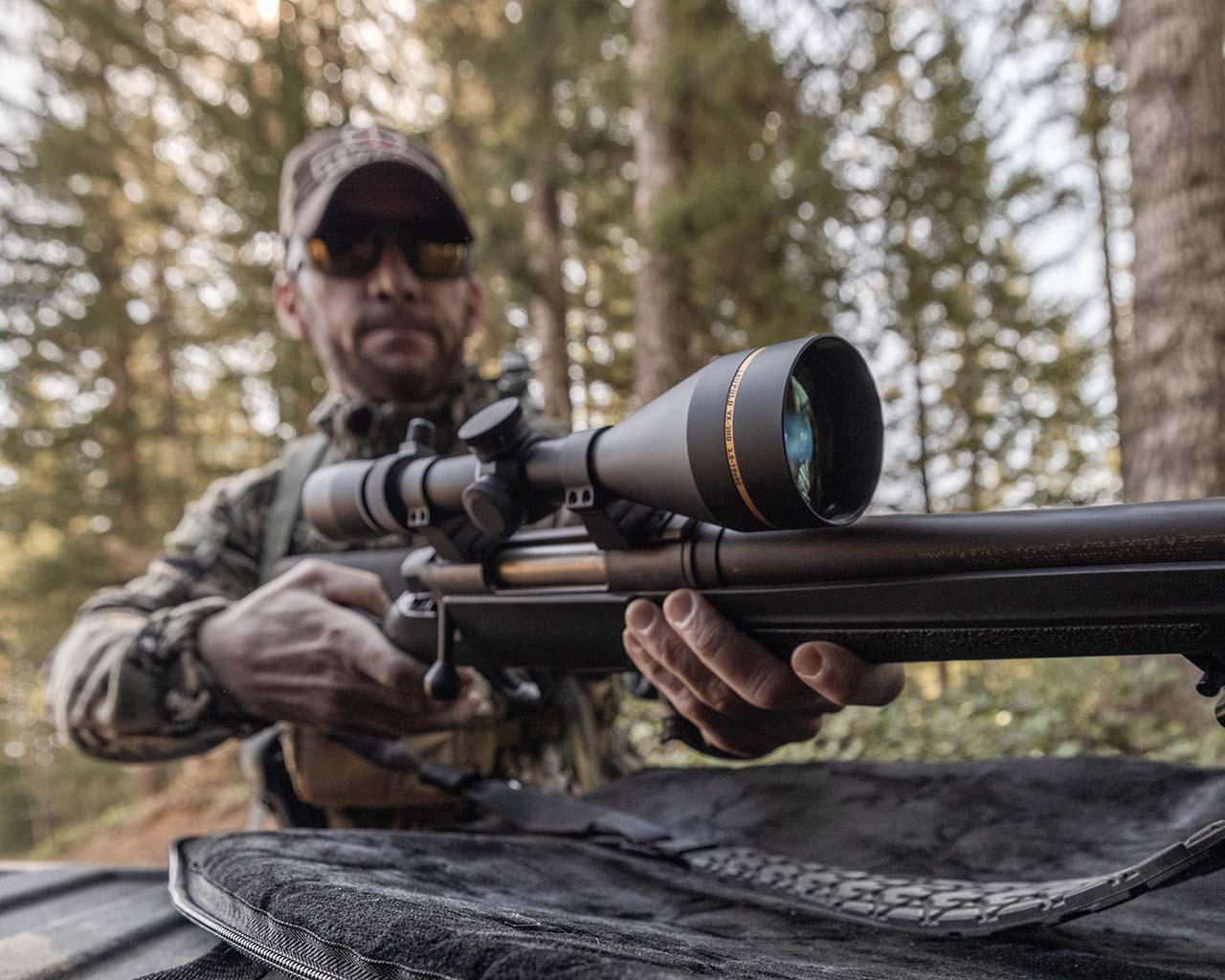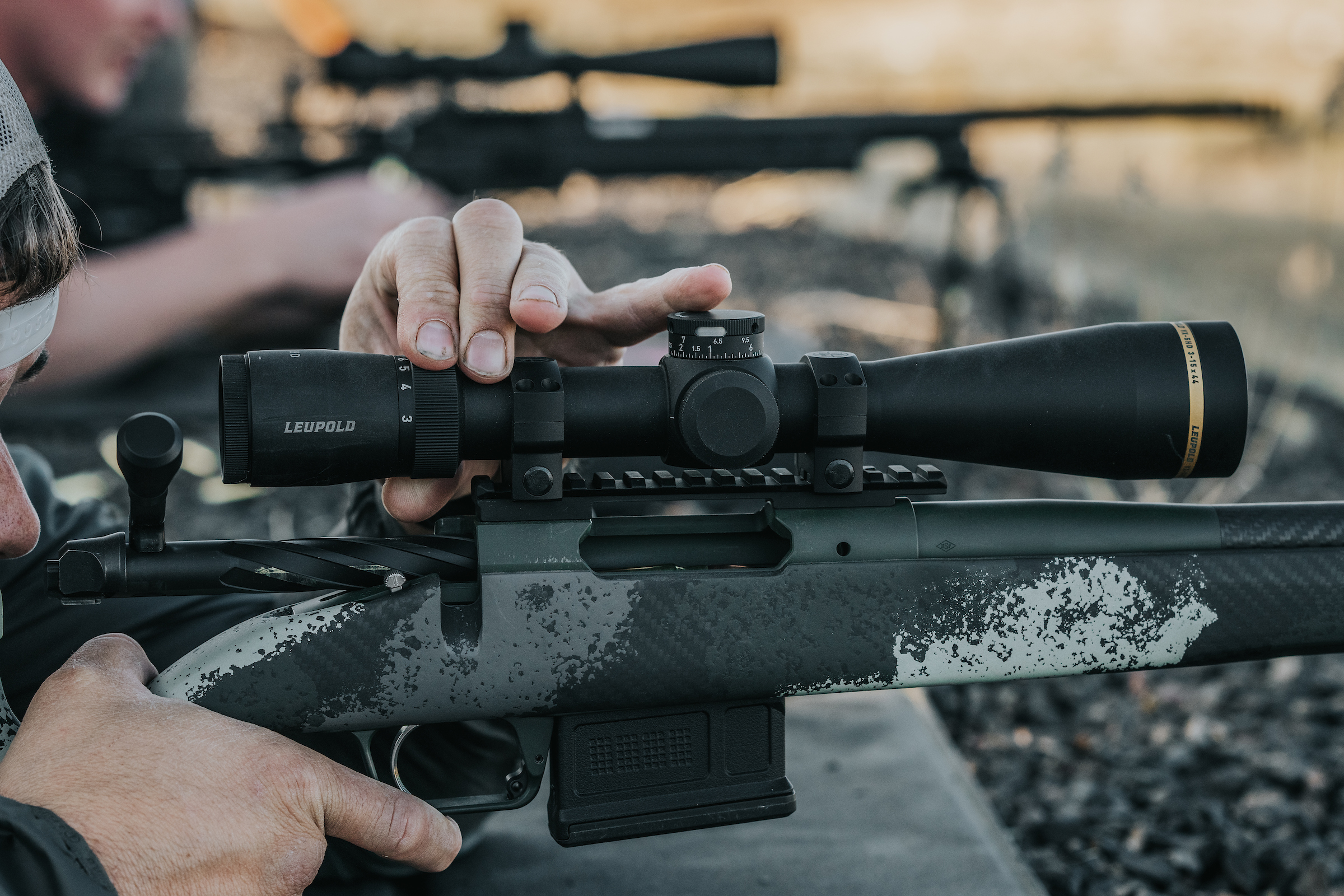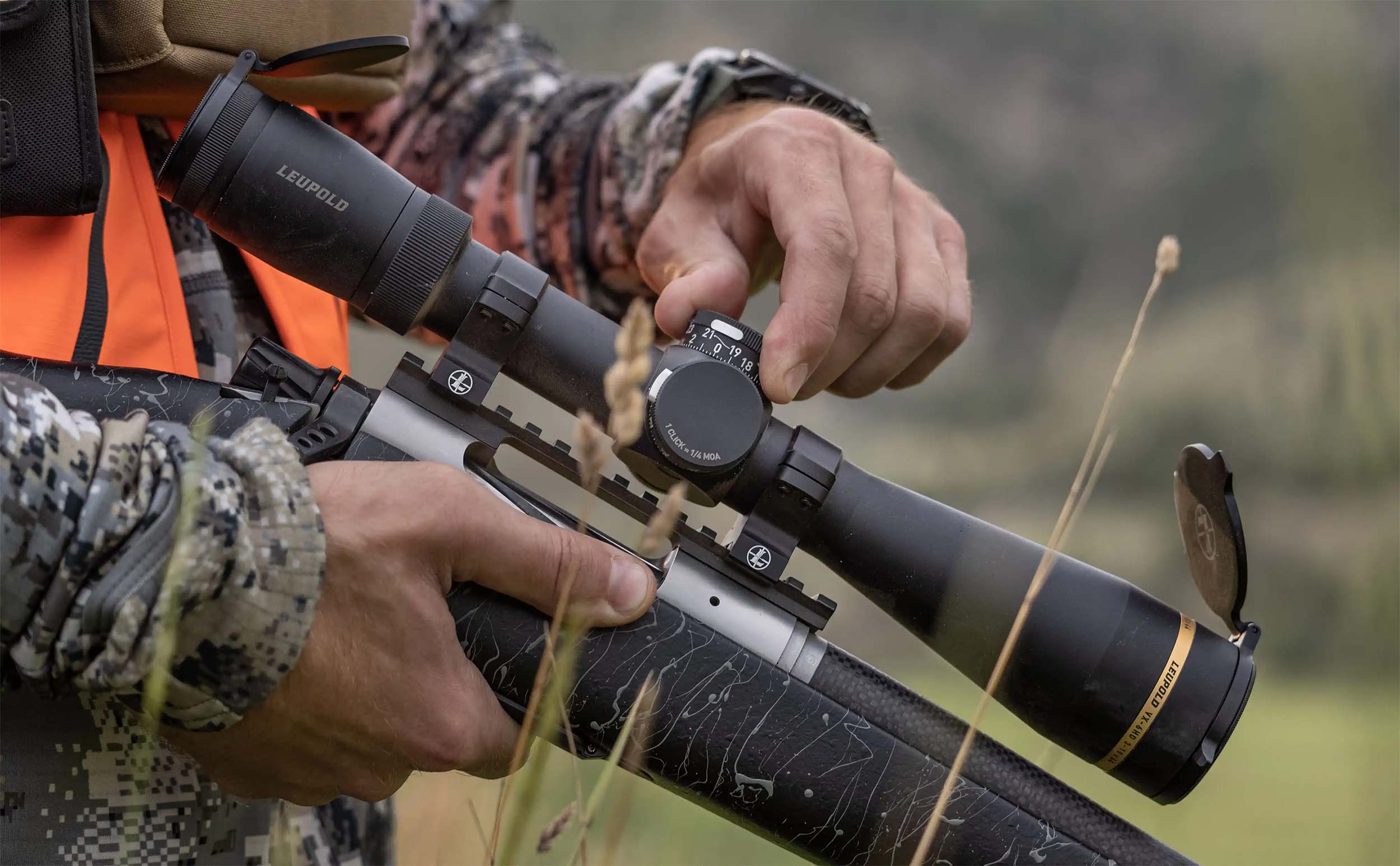Understanding the Numbers on Your Riflescope
Understanding the Numbers on Your Riflescope
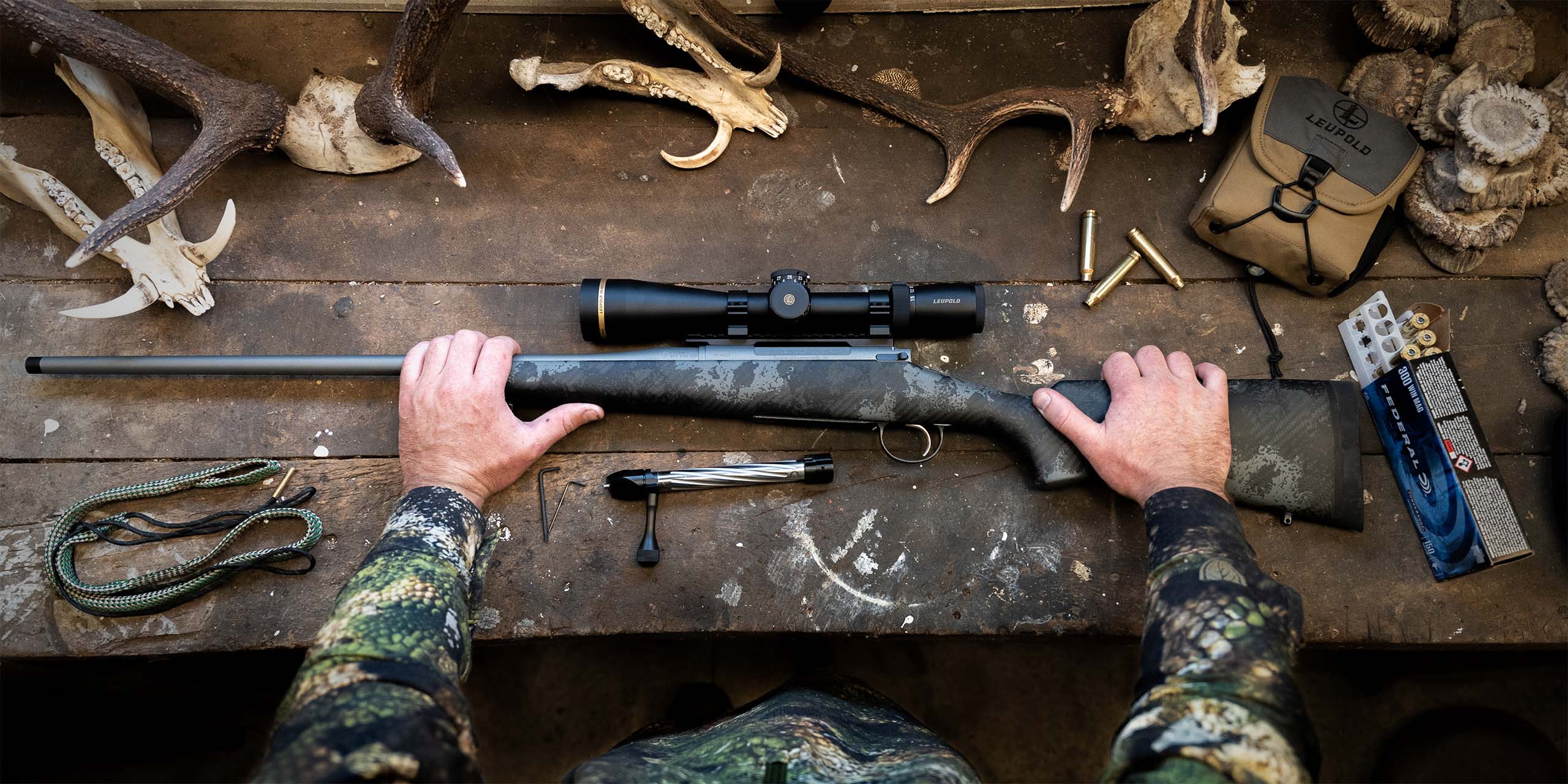

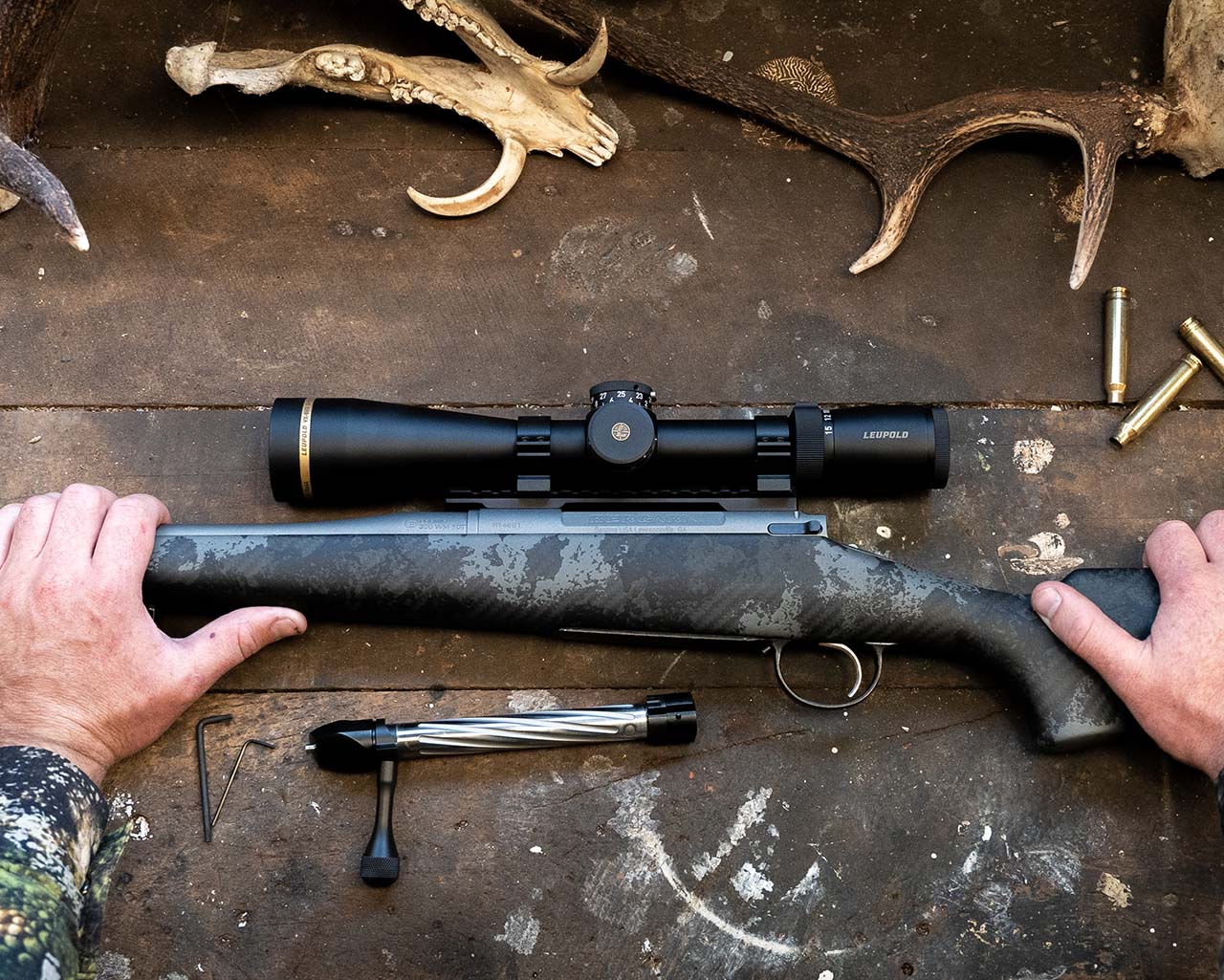
A lot of numbers get thrown around when people talk riflescopes. You’ll hear phrases like “three to nine” and “five to one.” But if you’re new to hunting or shooting, you may be wondering what those figures mean. Fortunately, the key to that code is etched right into your new Leupold optic. In this article, we will break down what all those numbers on your riflescope represent.
Zoom Ratio
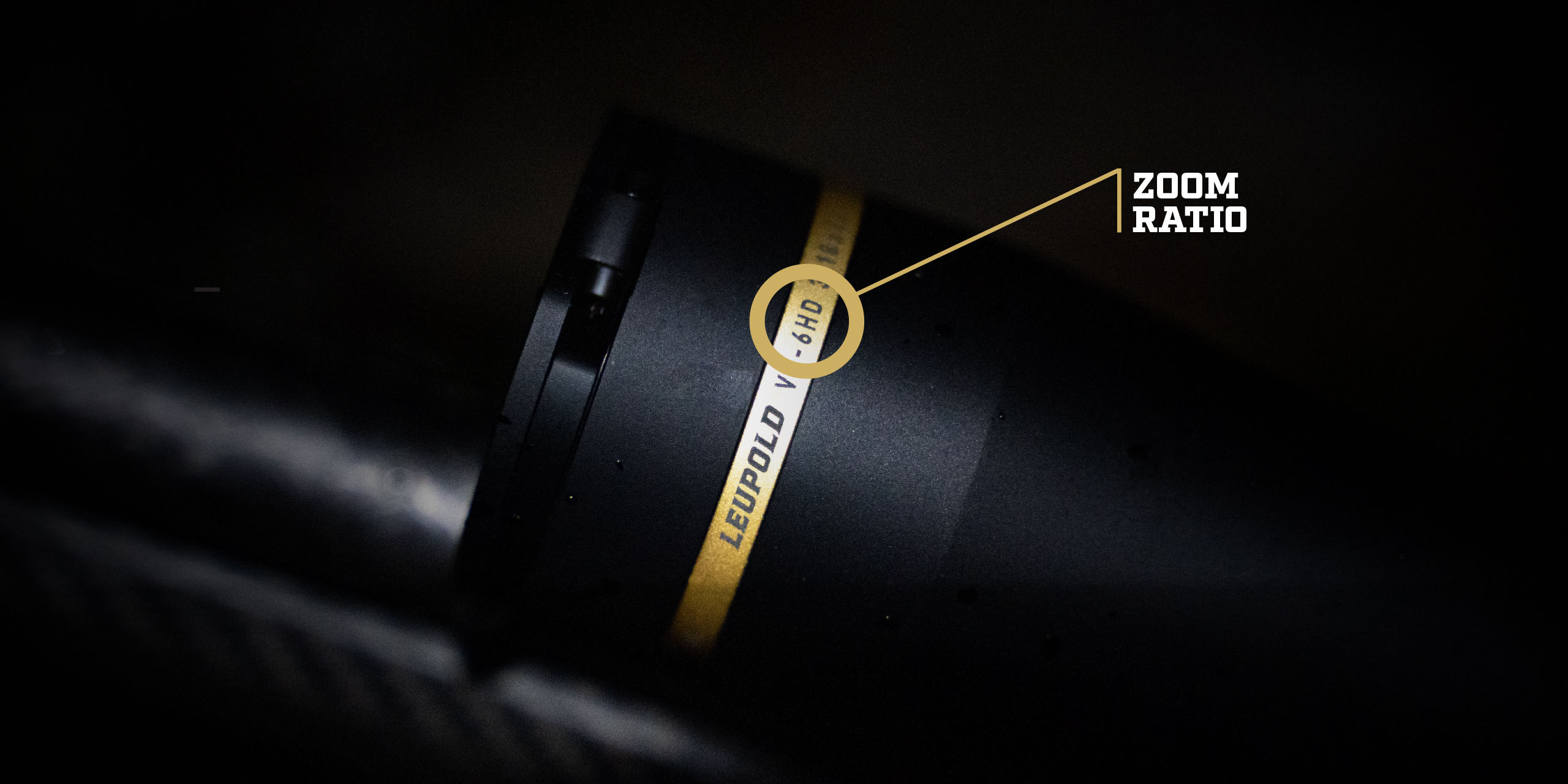

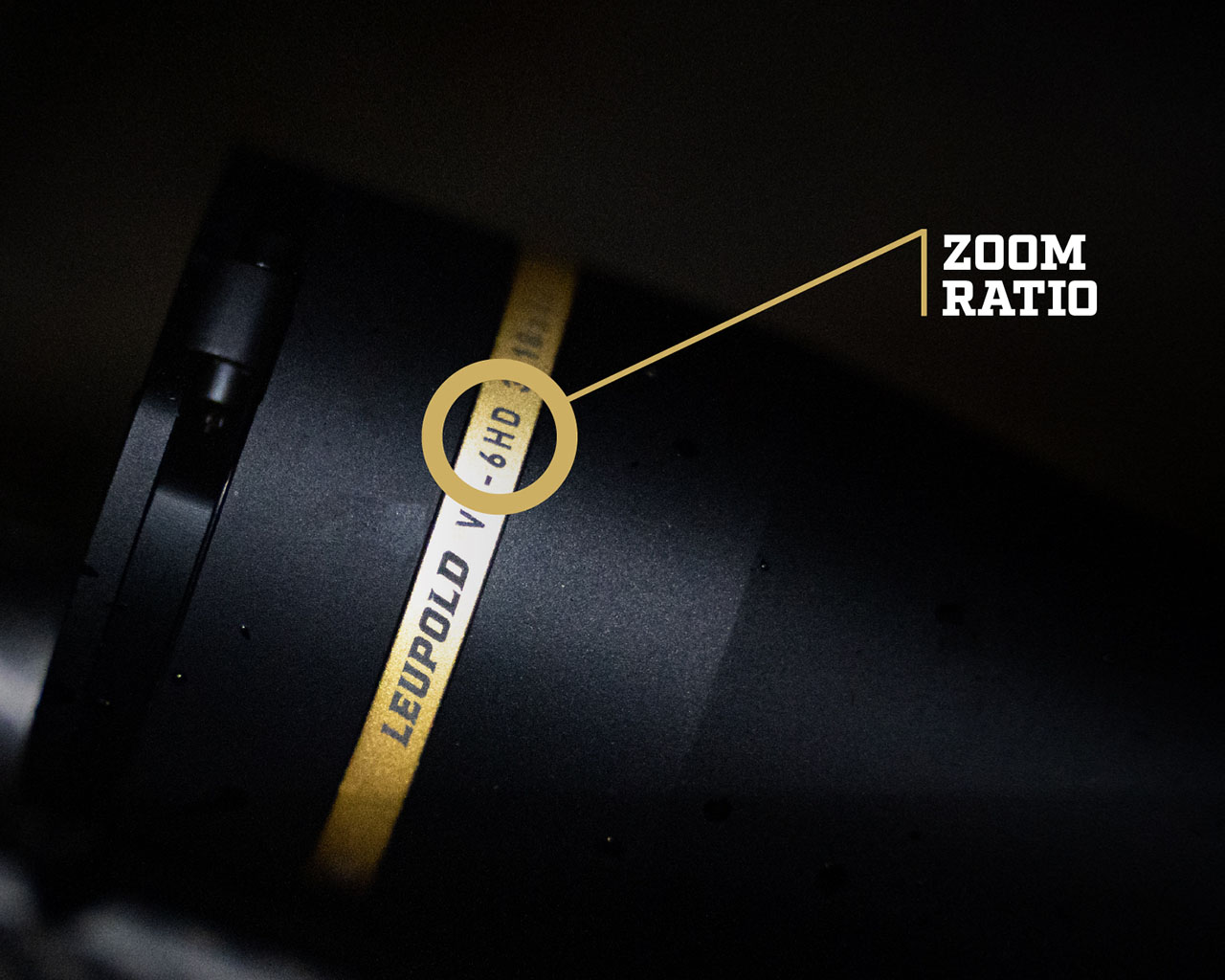
If you’re unfamiliar with the term zoom ratio, it’s simply the relationship between an optic’s magnification values. Have a look at the objective end of your scope, and you’ll see a black or gold ring with a short list of information on it. The first number on that list is usually attached to a series name, such as the 6 in VX-6HD (shown above).
At Leupold, we use this model number as a quick way to identify your scope’s zoom ratio. In this example, the VX-6HD is built around a 6:1 zoom ratio meaning its top-end magnification will always be six times greater than its low-end magnification.
A VX-5HD or Mark 5HD riflescope, for example, are built around a 5:1 zoom ratio. While our VX-3HD and Mark 3HD are built on a 3:1 zoom ratio. So if you’re ever curious what your zoom ratio is, just refer to the model name on your scope.
(The only model this doesn’t hold true is in the VX-Freedom series. Scopes in that series have a 3:1 zoom ratio, but there isn’t a number in their name to help you figure that out.)
Magnification Range
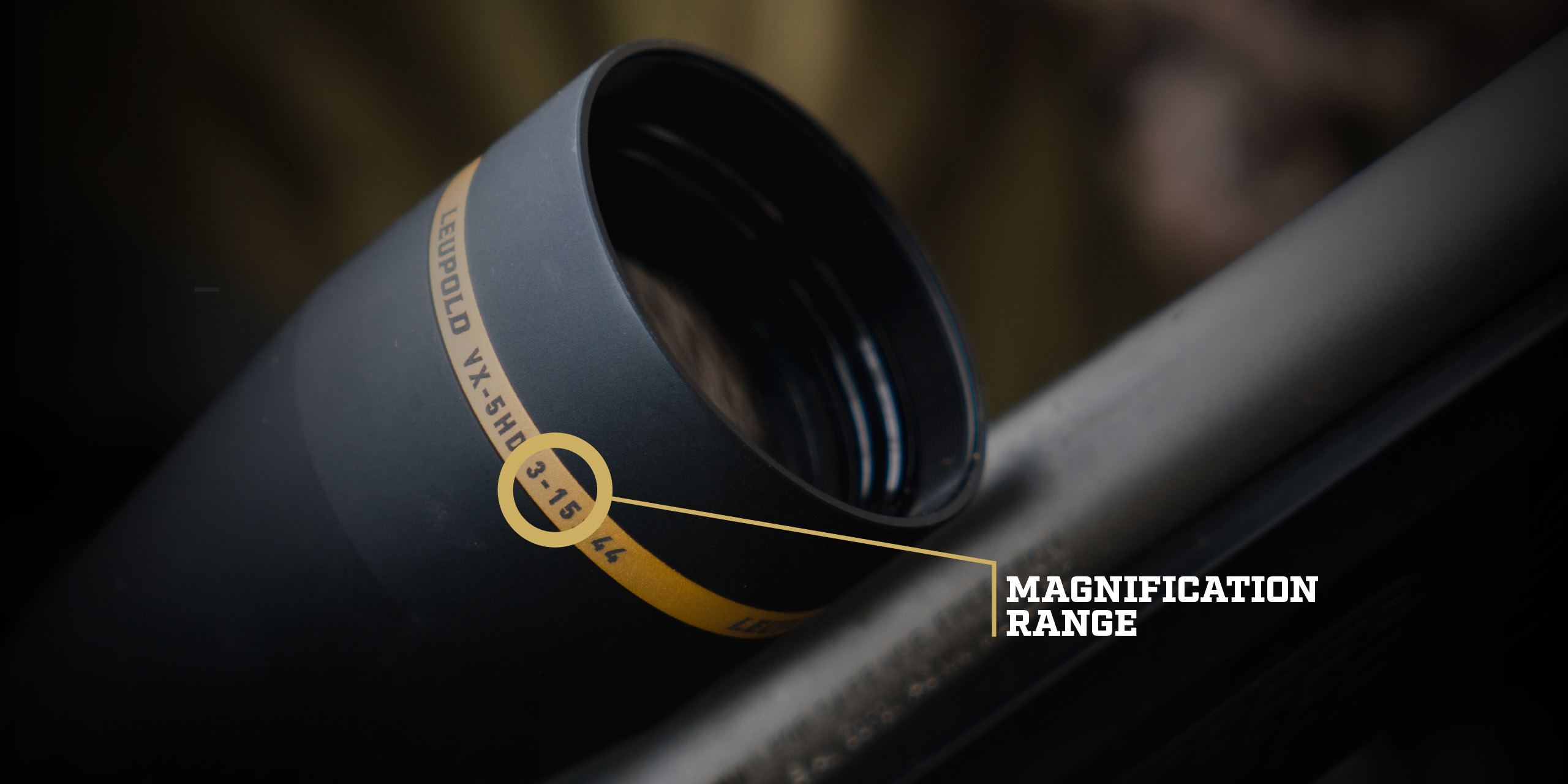

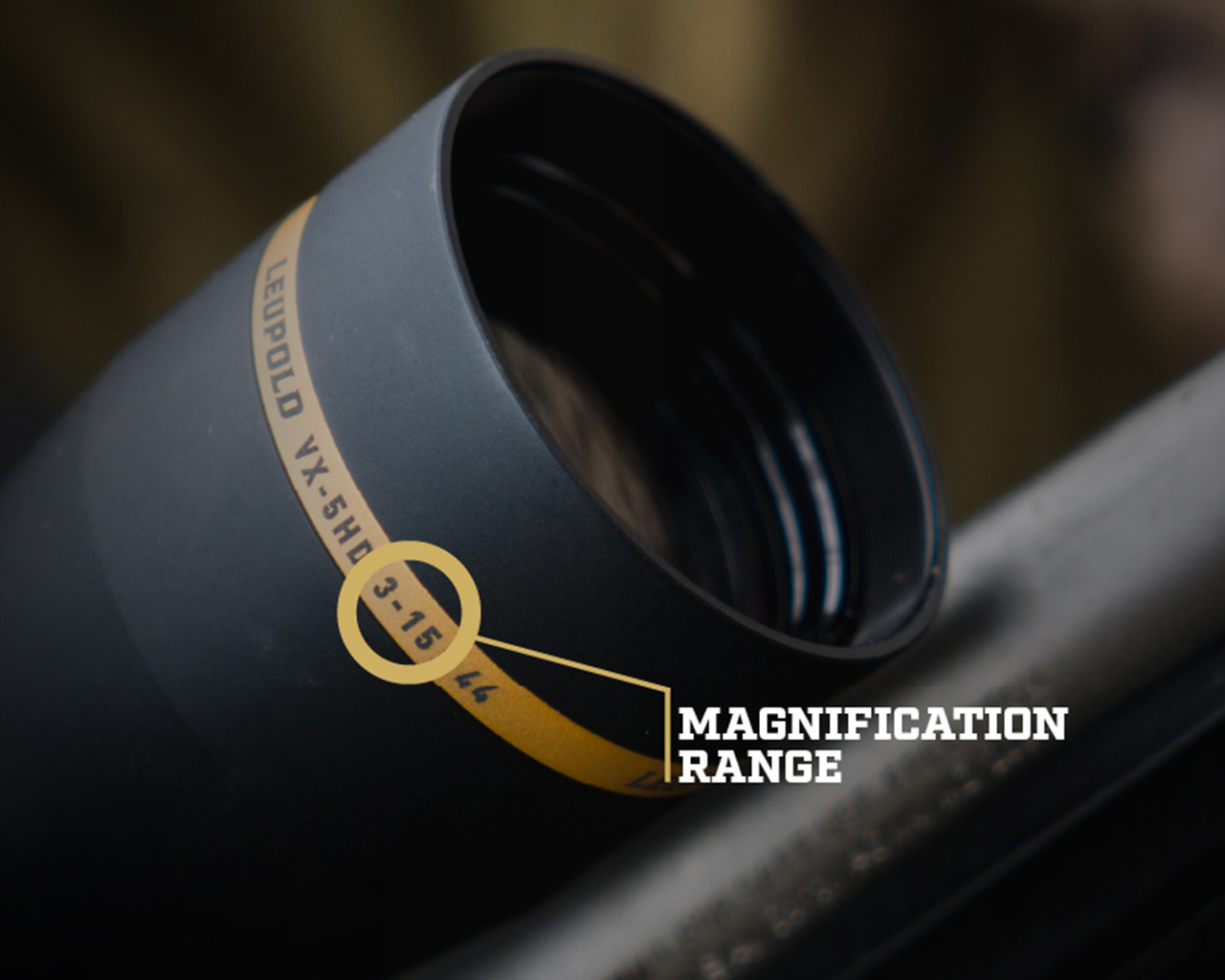
The numbers listed after the series name indicate your scope’s magnification range. These numbers vary from model to model, but remember, the zoom ratio will always dictate their limits. In the case of a VX-5HD (which has a 5:1 zoom ratio), its magnification offerings include: 1-5, 2-10, 3-15. 4-20, or 7-35. The first number represents the lowest optical magnification, while the higher number represents the max magnification.
For example, in the VX-5HD 3-15 shown above, your lowest setting magnification setting available is x3 power. But using your power-selector, you can also magnify your image up to x15 power. And while that is a bit of a condensed explanation, our Magnification 101 article will fill in the gaps if you’re interested in learning more.
Objective Lens
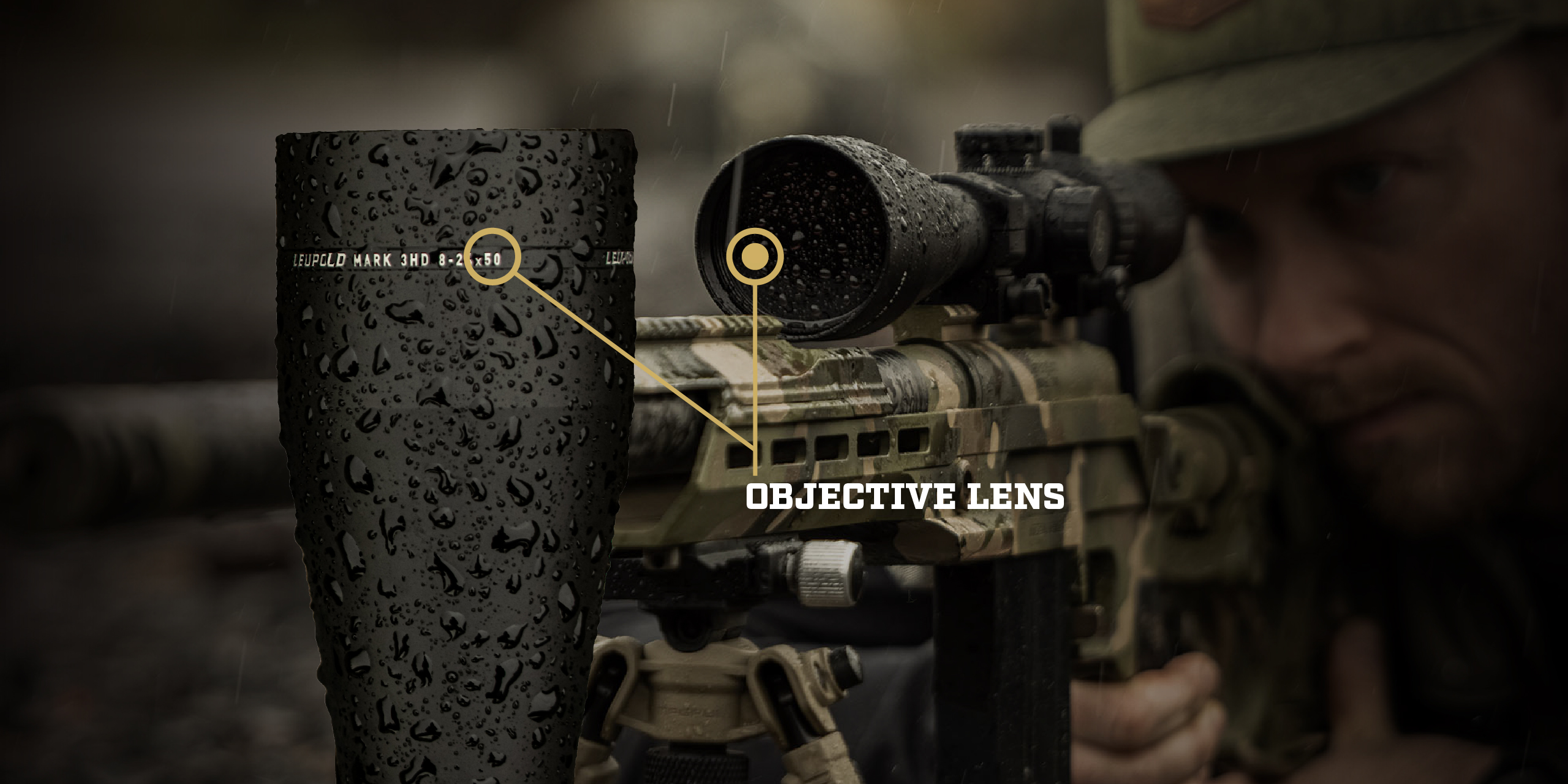

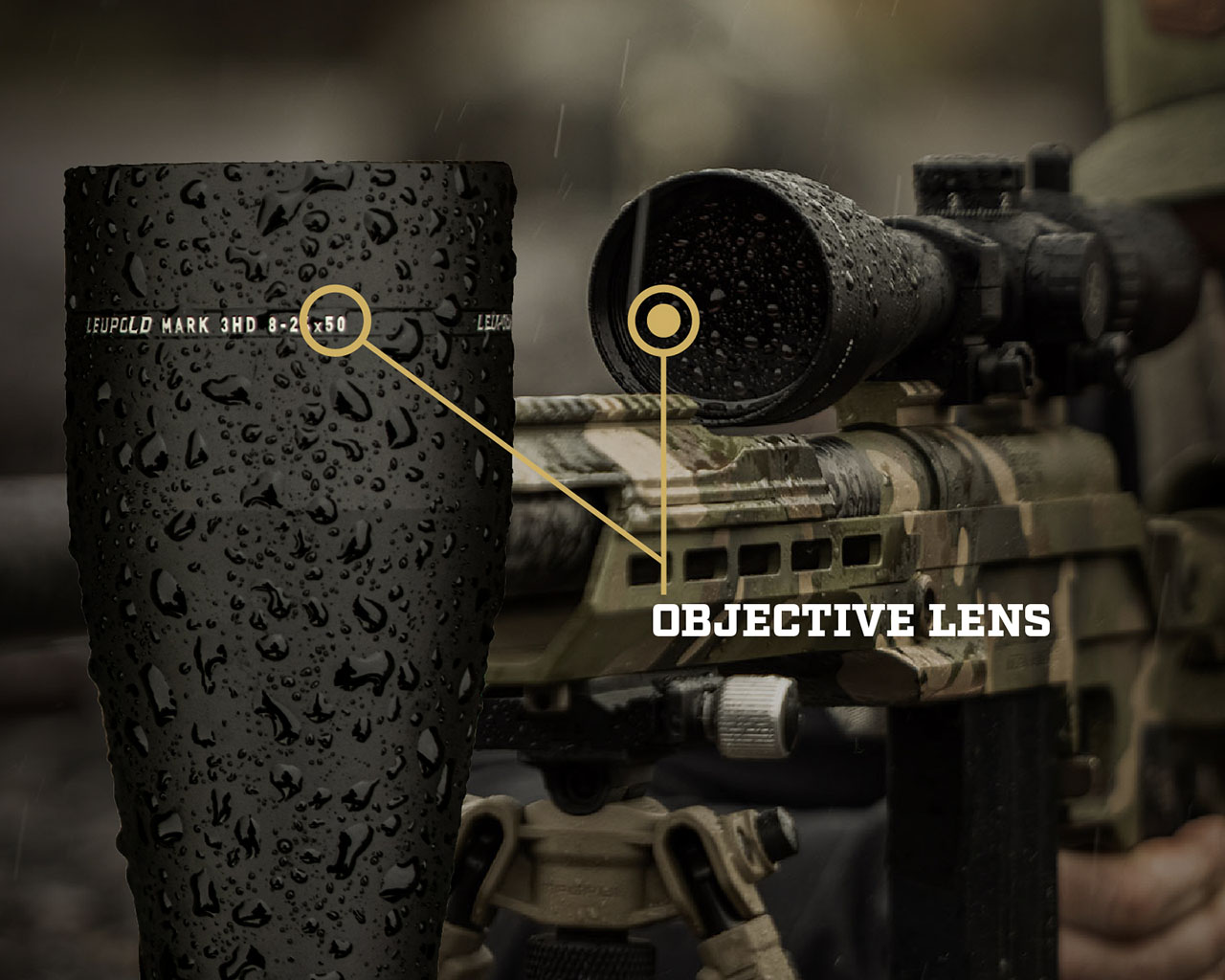
The objective lens is located nearest the objects being viewed, and its diameter in millimeters is the last number listed on your scope. In the example above, the objective lens of the Mark 3HD is 50mm. Larger objective lenses allow more light to enter an optic, making them extremely popular among hunters and shooters who want the brightest image possible in low-light situations. But there are plenty of options when it comes to objective lens sizes, and they all collect tons of light. Objective lens sizes can range from 32mm all the way up to 56mm. The last thing to keep in mind is that a larger objective lens means you may need taller mounts to avoid your optic touching the rifle. You can use our mount finder tool to get a recommendation for your specific setup.
Elevation, Windage, and Parallax Adjustments
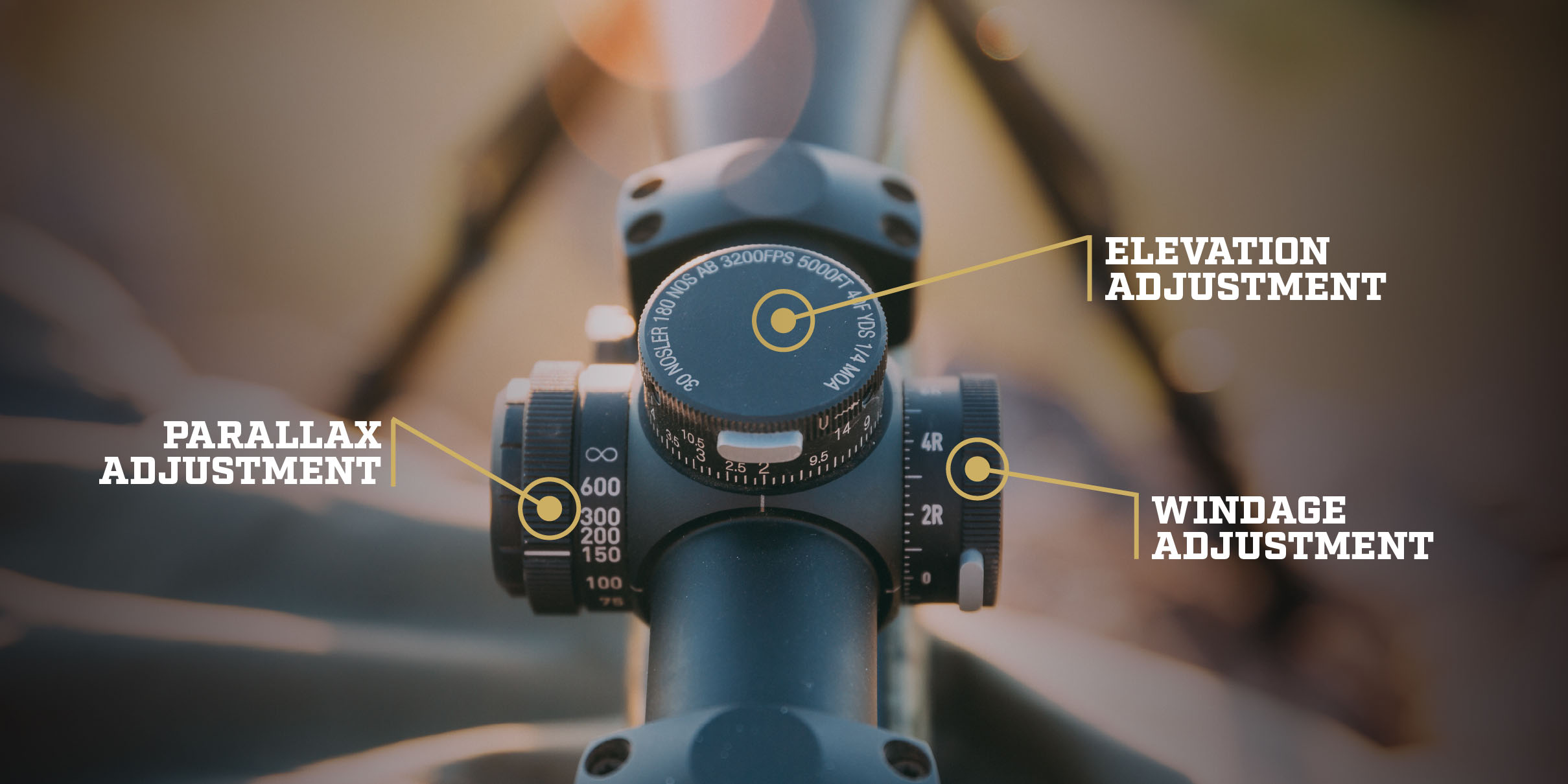

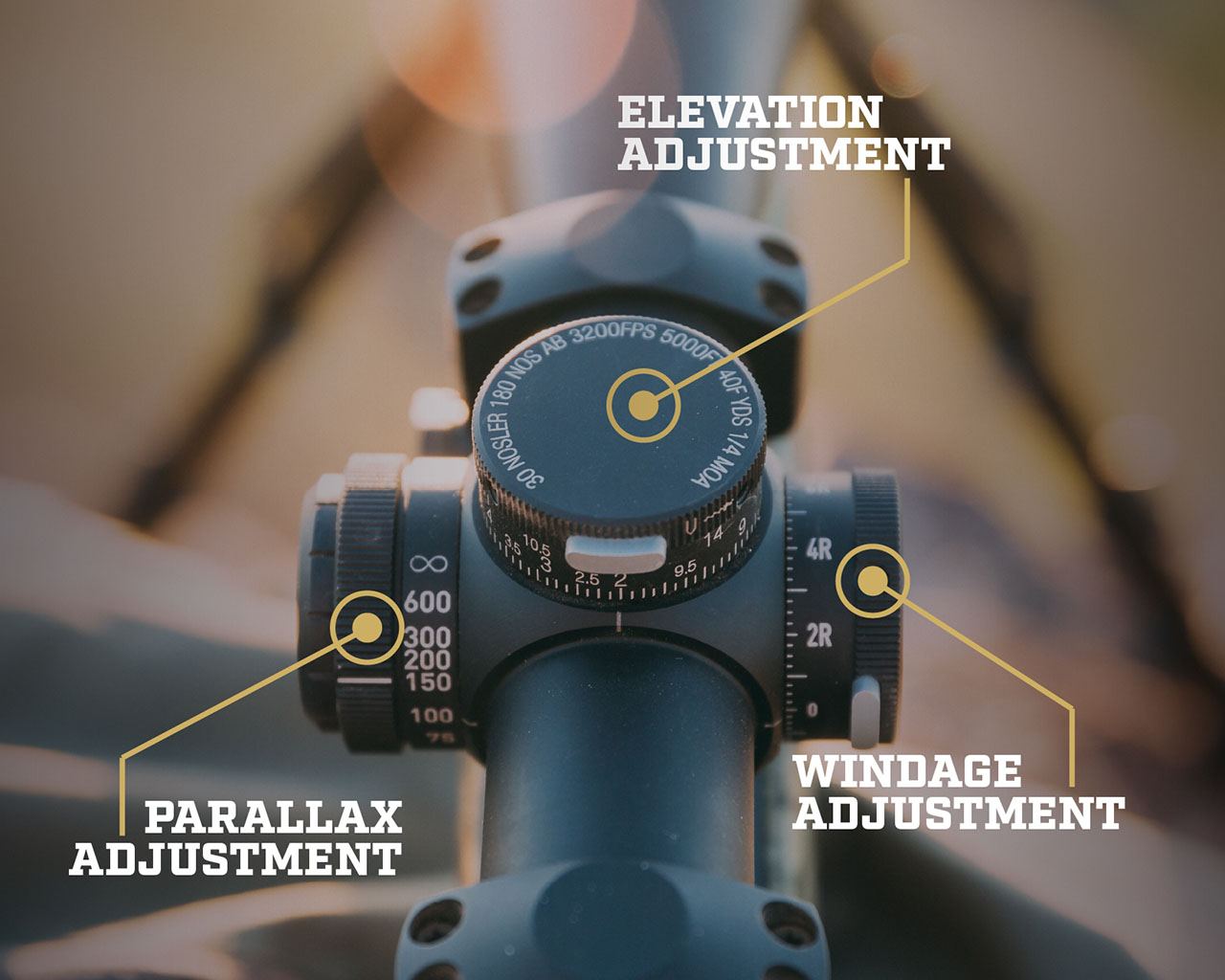
The elevation and windage dials are two more places aside from the bell and power selector where you’ll find etched-in numbers. The top turret is the elevation dial, and the windage dial is on the right; These are the areas you’ll want to focus on when you’re sighting in your scope. As far as those numbers go, they’ll either be represented in MOA or MILs. MOA, which stands for Minute of Angle, is the measurement system favored by American hunters, while MILs is the abbreviation for milliradians. Armed forces generally prefer to use MILs, but both units of measurement work equally well for most applications.
Alternatively, every CDS® (Custom Dial System) compatible scope is eligible to redeem one free custom dial. A CDS dial simplifies your shooting process by customizing the markings on your elevation dial from MOA or MILS to yards for your specific setup. You can learn more about CDS and order your custom dial here.
--
The parallax adjustment (also called side focus) is the last spot on your riflescope where there might be numbers. If your riflescope has one, it’ll be opposite the windage dial. This adjustment knob allows you to account for parallax by tweaking the position of the objective lens assembly, bringing objects into focus while stabilizing your reticle. But what is parallax? In short, it’s an optical illusion that occurs when your target and reticle are on different focal planes. You can see it in action by moving your head around while looking through your scope. As soon as you change your viewing angle, the reticle will appear to move or swim around.
For most people, especially hunters, parallax isn’t something worth stressing over. But if you’re a long-range precision shooter who needs bullet-on-bullet accuracy, a parallax adjustment is a must-have addition that’ll help you tighten your groups. Just zoom in on a target to whatever magnification you’re comfortable with, then turn the dial until you get a crisp picture and a reticle that stays put.
--
Now you should have a good understanding of all the numbers on your new Leupold riflescope. So, the next time you hear someone refer to their optic as a "three-to-fifteen by forty-four with a CDS dial and a side focus parallax adjustment," you’ll know exactly what they mean. Welcome to the club.


